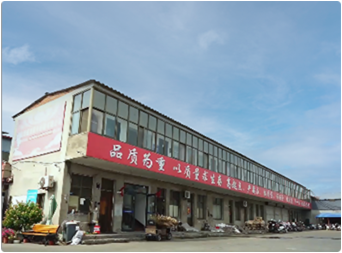Aug . 14, 2024 03:56 Back to list
Innovative Applications and Benefits of Stainless Steel Studding in Modern Construction and Manufacturing
The Versatile World of Stainless Studding
Stainless studding, often used in various construction and manufacturing applications, has become an indispensable material in modern engineering and design. Its unique properties and aesthetic appeal make it the preferred choice in many industries, from automotive to architectural design. In this article, we will explore the benefits, applications, and future prospects of stainless studding.
What is Stainless Studding?
Stainless studding is typically defined as a type of fastener or bolt used to join and support various structures and components. Made predominantly from stainless steel, these fasteners are characterized by their excellent corrosion resistance, strength, and durability. The inherent properties of stainless steel make it suitable for both indoor and outdoor applications, where exposure to moisture or extreme environmental conditions is a concern.
Benefits of Stainless Studding
1. Corrosion Resistance One of the most significant advantages of stainless studding is its ability to withstand rust and corrosion. This property is particularly important in industries such as marine, food processing, and chemical production, where components are often exposed to harsh elements.
2. Strength and Durability Stainless studding offers superior tensile strength compared to ordinary steel fasteners. This strength ensures that the connections made with stainless studding are reliable and can withstand heavy loads and stress without failure.
3. Aesthetic Appeal Beyond their functional properties, stainless studs also provide an elegant and polished appearance. This makes them a favorite choice in architectural applications where visual appeal and design integrity are essential.
4. Low Maintenance Since stainless steel does not tarnish or require frequent maintenance, structures featuring stainless studding can significantly reduce upkeep costs over time. This is particularly advantageous for projects requiring long-term durability.
Applications of Stainless Studding
stainless studding

Stainless studding is versatile and utilized across various sectors, including
- Construction and Architecture In commercial buildings, stainless studding is used for structural applications, cladding, and decorative purposes where both strength and appearance are crucial. Its resistance to environmental factors makes it ideal for building facades, handrails, and outdoor fixtures.
- Automotive Industry In automotive manufacturing, stainless studding is commonly utilized in frame assembly and engine components. The combination of strength and resistance to corrosion is vital for vehicle longevity and safety.
- Marine Applications Stainless studding is extensively used in boat and shipbuilding. The marine environment demands materials that can survive saltwater exposure, making stainless fasteners an industry standard.
- Food Processing The food industry values stainless studding for its hygienic properties. It is used in equipment that requires regular cleaning and is subject to moist conditions, ensuring compliance with health standards.
Future Prospects
As industries continue to embrace sustainability and durability, the demand for stainless studding is expected to grow. Innovations in stainless steel manufacturing and treatment processes will likely enhance properties such as strength and resistance even further, catering to more specialized applications.
Moreover, the growing focus on environmentally friendly practices is pushing manufacturers to explore new ways to produce stainless studding with minimal ecological impact. The recycling capabilities of stainless steel also position it favorably in a world increasingly concerned about sustainability.
Conclusion
Stainless studding stands as a testimony to the fusion of functionality and design in engineering. Its remarkable features and adaptability across sectors showcase its importance in contemporary applications. As technology continues to evolve, stainless studding will assuredly play a crucial role in shaping the future of construction, manufacturing, and beyond, contributing to sustainable and durable engineering solutions.


